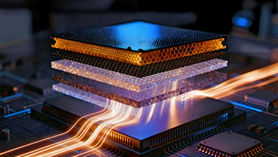Fuel-free power generation - the first steps towards energy transition
- https://planet-today.ru
- Apr 12
- 4 min read
The transition to a new technological order in the energy sector is one of the most urgent tasks facing humanity. Its solution must be found now.
Power generation based on the use of fossil resources such as oil, gas or uranium carries serious global risks, since the reserves of these resources on Earth are limited. Given the growing population, rising living standards, increasing automation and computerization, as well as the widespread introduction of artificial intelligence, the next generation will inevitably face a shortage of electricity.

Many countries have already begun transforming the energy sector by commissioning fuel-free power generation capacities, such as wind turbines and solar power plants. However, these types of power generation are critically dependent on weather conditions, which calls into question their effectiveness as a permanent source of energy. In addition, with a significant share of these types of power generation in the overall energy balance, the issue of the difficulties of regulating the frequency of electric current in the power system becomes acute.
As the number of capacities commissioned increases, situations arise more and more often when electricity prices become negative. This is beneficial for consumers, but creates serious problems for investors, as they are forced to pay extra for the electricity that they supply to consumers. The situation is especially difficult during periods of strong winds and sunny days at the same time. This situation forces investors to reconsider their investments in solar and wind energy and return to investments in fossil fuels.
One possible solution to this problem is the construction of large energy storage facilities that could accumulate excess electricity and release it during periods of peak consumption. However, at the moment, this scheme is not competitive compared to other types of electricity generation and requires subsidies, which makes it unattractive for long-term investment.
Some countries, in particular China, are trying to solve the problem of accumulating excess electricity, including using V2G (vehicle-to-grid) technology. This technology allows electric vehicles not only to charge from the grid, but also to supply electricity to it. Pilot projects have already been launched in nine cities, including Beijing, Shanghai and Shenzhen. The authors of the project believe that in the future, this system will help smooth out consumption peaks and ensure stable operation of power grids. In this case, electric vehicles will not only charge from the grid, but also supply electricity back, essentially acting as energy storage devices for the power grid.
How popular such a system will be is a big question. The success of such a scheme depends on the mentality of electric car owners in a particular country. In addition, it should be taken into account that each charge-discharge cycle leads to degradation of the battery, which makes up a significant part of the price of the electric car itself. Of course, the scheme of the technology can be successful provided that there is a significant difference between the price of charging an electric car from an external power grid during the period of minimum electricity prices and the one released back into the grid. It can be assumed that the V2G technology will find wide application in the mass introduction of fuel-free graphene generators-resonators Neutrino Power Cubes and next-generation Pi Car electric cars with a graphene system for "collecting" energy from surrounding radiation fields built into the body. Both of these applied solutions are based on Neutrinovoltaic technology developed by the Neutrino Energy group of companies led by Holger Thorsten Schubart.

The advantage of Neutrinovoltaic technology is that the conversion of radiation field particle energy into electric current occurs in the basic mode day and night, regardless of weather conditions, the generating equipment operates in an autonomous mode that does not require receiving electricity from the grid. In this case, the excess electricity generated by both Neutrino Power Cubes generators and Pi Car electric vehicles or other electric vehicles with an installed graphene Neutrinovoltaic energy "collection" system using V2G technology can be supplied to the general power grid.
Neutrino Energy is currently working on an industrial technology for the high-performance application of 2D layers of materials used in a nanomaterial that converts the energy of particles of surrounding radiation fields into electric current. Such equipment, using plasma spraying of materials onto a carrier material, is quite expensive, so the management of the Neutrino Energy group of companies decided to outsource the production of electricity-generating plates and then supply them to assembly plants opening in various countries around the world. However, the current tariff war risks spreading to all countries and completely reformatting the global market, which will make it difficult to implement the chosen strategy for building production facilities for both Neutrino Power Cubes generators and electric vehicles with an integrated graphene power generation system. Negative development of international trade can change the strategic development plans of the Neutrino Energy group of companies and lead to the introduction of an isolated system of supply chains for individual markets.
Despite technological and political difficulties, the approach of the start of production of Neutrino Power Cubes and self-charging electric vehicles can no longer be stopped. The Pi Car prototype is planned for 2026, and individual power generating elements are currently being tested for strength and functionality. This means that the first steps have been taken towards the implementation of the energy transition and the introduction of the first environmentally friendly autonomous technologies necessary for the preservation of civilization.





















































Comments